Top Industries Transformed by Artificial Intelligence
Artificial intelligence (AI) has transitioned from a futuristic concept to a transformative force reshaping various industries in recent years. Its ability to analyze large datasets, automate processes, and improve decision-making has made AI an indispensable tool across multiple sectors.
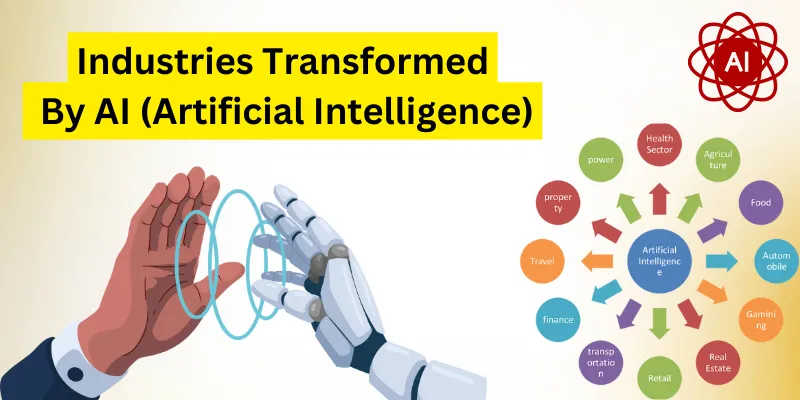
This article explores 15 key industries that AI has revolutionized, highlighting its profound impact on their operations and growth.
Industries AI Has Revolutionized
Below is a list of industries that AI has transformed, followed by a detailed explanation of each:
- Healthcare
- Finance
- Retail
- Manufacturing
- Travel and Tourism
- Education
- Agriculture
- Automotive
- Logistics and Supply Chain
- Media and Entertainment
- Cybersecurity
- Marketing and Advertising
- Human Resources (HR)
- Telecommunications
- Insurance
Let us cover all these in detail.
1. Healthcare
Healthcare includes hospitals, doctors, medicines, and treatments that help people stay healthy.
How AI Has Changed Healthcare:
AI has improved healthcare by helping doctors diagnose diseases, suggest better treatments, and make patient care faster and more accurate.
How AI is Used in Healthcare:
- Finding diseases early – AI can look at X-rays, MRIs, and CT scans to detect problems like cancer before they become serious.
- Better treatments – AI studies patient history and suggests the best medicines and treatments.
- Faster drug discovery – AI helps scientists find new medicines quickly by analyzing large amounts of data.
- Virtual doctors – AI chatbots answer health questions and help people book doctor appointments.
- Robot-assisted surgery – AI-powered robots help doctors perform surgeries with high precision.
2. Finance
Finance is about managing money. It includes banking, investments, loans, and payments.
How AI Has Changed Finance:
AI makes financial transactions safer, helps people manage money better, and assists banks in detecting fraud.
How AI is Used in Finance:
- Fraud detection – AI scans millions of transactions to spot fake or suspicious activities.
- Automated trading – AI helps investors make smart decisions by analyzing market trends.
- AI chatbots for banking – AI-powered assistants help customers check balances, pay bills, and answer banking questions 24/7.
- Loan approvals – AI studies credit scores and financial history to approve loans faster.
- Expense tracking – AI apps help users manage budgets by analyzing spending habits.
3. Retail
Retail is about selling products in stores or online. It includes businesses like supermarkets, clothing stores, and e-commerce websites.
How AI Has Changed Retail:
AI helps businesses understand what customers want, improve shopping experiences, and manage inventory more efficiently.
How AI is Used in Retail:
- Smart recommendations – AI suggests products based on what customers have previously bought or searched for.
- Chatbots for customer support – AI assistants help shoppers find products, answer questions, and track orders.
- Better inventory management – AI predicts which products will sell fast and helps stores restock on time.
- AI-powered visual search – Customers can upload images, and AI finds similar products online.
- Cashier-free stores – AI allows customers to shop and pay without waiting in lines.
4. Manufacturing
Manufacturing is the process of making products in factories, such as cars, electronics, and food items.
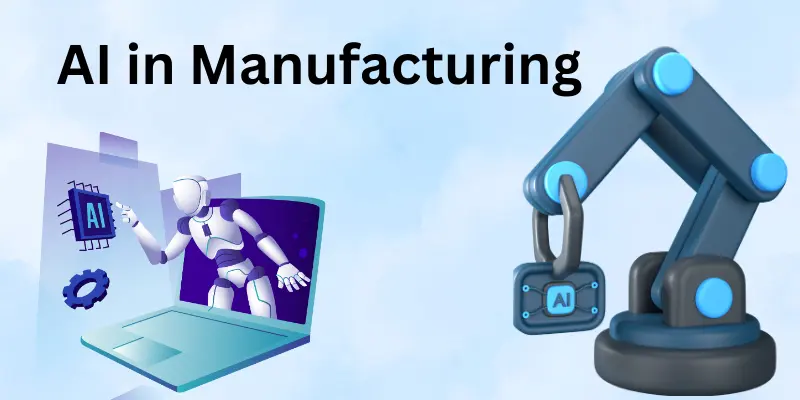
How AI Has Changed Manufacturing:
AI improves production by reducing mistakes, speeding up processes, and ensuring quality control.
How AI is Used in Manufacturing:
- AI-powered robots – Robots handle repetitive tasks, making production faster and more accurate.
- Predictive maintenance – AI predicts when machines will need repairs, preventing unexpected breakdowns.
- Smart quality control – AI checks products for defects and ensures only high-quality items reach customers.
- Supply chain optimization – AI helps manufacturers track raw materials and manage deliveries.
- AI-assisted product design – AI speeds up the creation of new products by testing designs digitally before production.
5. Travel and Tourism
This industry includes airlines, hotels, travel agencies, and online booking platforms that help people plan vacations and business trips.
How AI Has Changed Travel and Tourism:
Travel AI improves customer service, helps travelers plan better trips, and allows companies to manage their operations more efficiently.
According to Beaches of Normandy Tours, AI is reshaping travel and tourism by making trip planning smoother, offering personalized recommendations, and simplifying tasks like booking and check-ins.
How AI is Used in Travel and Tourism:
- AI chatbots for booking assistance – AI answers travel questions and helps with flight or hotel bookings.
- Personalized travel recommendations – AI Agents suggest destinations, hotels, and activities based on a traveler’s past preferences.
- AI-powered flight predictions – AI analyzes weather, traffic, and previous delays to predict flight schedules.
- Automated check-ins – AI allows travelers to check into hotels and flights without waiting in long lines.
- Smart language translation – AI-powered translation apps help travelers communicate in different languages.
6. Education
Education includes schools, colleges, online courses, and training programs that help people learn new skills.
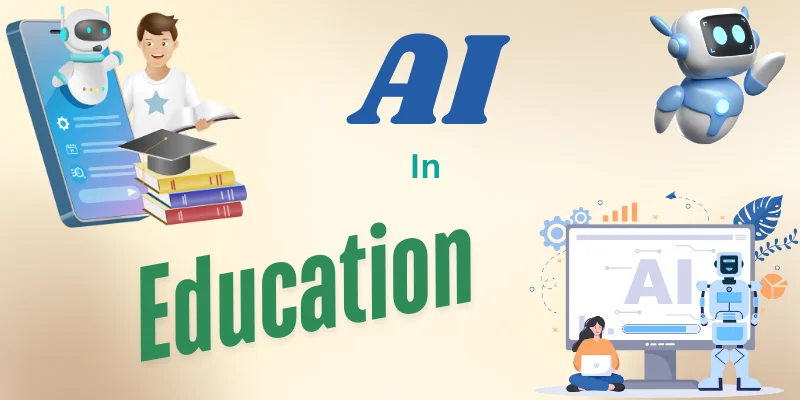
How AI Has Changed Education:
AI makes learning more engaging, personal, and accessible for students of all ages.
How AI is Used in Education:
- Personalized learning – AI adjusts lessons based on a student’s learning speed and performance.
- AI tutors – AI-powered tools help students understand difficult subjects by providing step-by-step explanations.
- Automated grading – AI checks assignments and provides instant feedback to students.
- Smart content creation – AI helps teachers create better learning materials, including quizzes and presentations.
- Language learning apps – AI-powered apps like Duolingo make learning new languages easier and more interactive.
7. Agriculture
Agriculture is farming—growing crops and raising animals for food and other products.
How AI Has Changed Agriculture:
AI helps farmers improve crop production, monitor soil health, and use resources more efficiently.
How AI is Used in Agriculture:
- Smart irrigation systems – AI controls water usage, saving water and improving crop health.
- AI-powered pest detection – AI identifies pests and suggests the best ways to control them.
- Precision farming – AI analyzes soil data to help farmers decide when and where to plant crops.
- Automated harvesting – AI-powered robots pick fruits and vegetables quickly and efficiently.
- Livestock monitoring – AI tracks the health of animals and alerts farmers about any issues.
8. Automotive
The automotive industry includes companies that make and sell cars, trucks, and other vehicles.
How AI Has Changed Automotive:
AI is making cars safer, more efficient, and even self-driving.
How AI is Used in Automotive:
- Self-driving cars – AI helps cars drive without human control by using cameras and sensors.
- Driver assistance – AI-powered systems alert drivers about dangers and help prevent accidents.
- Traffic prediction – AI studies traffic patterns to suggest the fastest routes.
- Voice-controlled assistants – AI allows drivers to control music, navigation, and calls using voice commands.
- Smart car maintenance – AI predicts when a car needs servicing to avoid breakdowns.
9. Logistics and Supply Chain
Logistics and supply chain management involve the movement of goods from manufacturers to consumers, including transportation, storage, and inventory management.
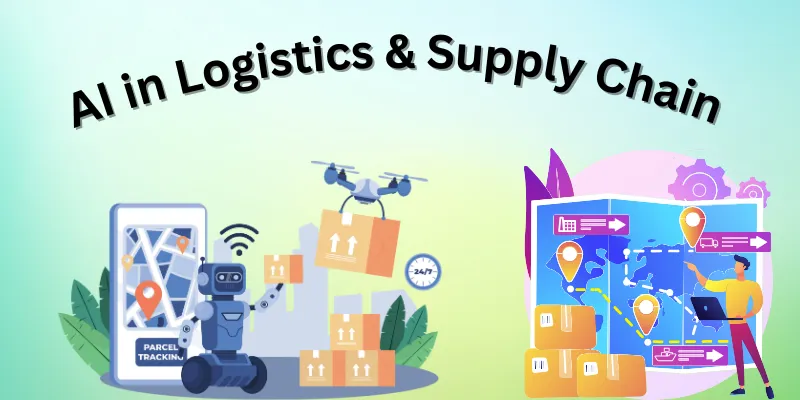
How AI Has Changed Logistics and Supply Chain:
AI optimizes delivery routes, predicts demand, and reduces operational costs, making supply chains more efficient and reliable.
How AI is Used in Logistics and Supply Chain:
- Route optimization – AI analyzes traffic and weather conditions to find the fastest delivery routes.
- Demand forecasting – AI predicts future demand to help companies stock the right amount of inventory.
- Warehouse automation – AI-powered robots assist in sorting, packing, and managing goods.
- Predictive maintenance – AI monitors vehicle and equipment health to prevent breakdowns.
- Fraud detection – AI identifies suspicious transactions and prevents supply chain fraud.
10. Media and Entertainment
The media and entertainment industry includes television, movies, music, and online content creation.
How AI Has Changed Media and Entertainment:
AI personalizes content recommendations, improves video editing, and even creates new digital content.
How AI is Used in Media and Entertainment:
- Content recommendation – AI suggests movies, TV shows, and music based on user preferences.
- AI-generated content – AI creates music, scripts, and even entire videos.
- Automated video editing – AI enhances video and audio quality while automating editing tasks utilizing Free AI video editor tools.
- Fake content detection – AI helps identify and remove deepfake videos and misinformation.
- Interactive entertainment – AI powers virtual influencers, chatbots, and interactive storytelling.
11. Cybersecurity
Cybersecurity protects computers, networks, and data from digital attacks or theft.
How AI Has Changed Cybersecurity:
AI helps detect threats faster, keeps systems safe from hackers, and automates security tasks.
How AI is Used in Cybersecurity:
- Threat detection – AI spots abnormal activities that could indicate a cyberattack.
- Real-time monitoring – AI keeps an eye on systems and networks 24/7 to prevent breaches.
- Fraud prevention – AI analyzes patterns in data and stops fraudulent transactions.
- Automated security responses – AI can act instantly, blocking threats without human intervention.
12. Marketing and Advertising
Marketing and advertising involve promoting products or services to customers using various strategies.
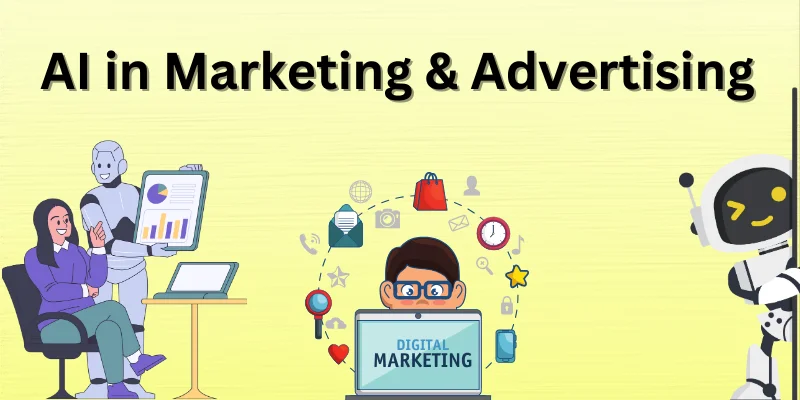
How AI Has Changed Marketing and Advertising:
AI personalizes ads, tracks consumer behavior, and helps companies target their audience better.
How AI is Used in Marketing and Advertising:
- Targeted ads – AI uses customer data to show relevant ads to the right people.
- Social media monitoring – AI tracks how people feel about brands on social platforms.
- Chatbots for customer interaction – AI interacts with customers, answering their questions and providing recommendations.
- Content creation – AI can generate ad copy, product descriptions, and even blog posts.
Working with an AI digital marketing agency can help businesses implement these tools more effectively and stay competitive. These agencies bring the technical expertise and strategic insight needed to harness AI’s full potential, making campaigns smarter, more personalized, and more efficient.
13. Human Resources (HR)
Human Resources involves managing employees, hiring, training, and addressing workplace needs.
How AI Has Changed Human Resources:
AI helps HR teams hire better candidates, enhance employee engagement, and improve workplace productivity.
How AI is Used in Human Resources:
- Automated recruitment – AI scans resumes to find the best candidates for a job.
- Employee engagement – AI analyzes feedback to help improve workplace culture.
- Training programs – AI customizes training based on an employee’s skills and progress.
- Chatbots for HR inquiries – AI answers employee questions about benefits, policies, and other HR topics.
14. Telecommunications
Telecommunications is the industry that provides phone, internet, and television services to customers.
How AI Has Changed Telecommunications:
AI improves customer service, helps companies optimize networks, and enhances service reliability.
How AI is Used in Telecommunications:
- Customer support – AI chatbots quickly resolve customer issues, reducing wait times.
- Network optimization – AI helps predict and fix network issues, ensuring better connectivity.
- Smart call routing – AI directs customer calls to the right department based on the issue.
- Predictive maintenance – AI detects problems in the network before they disrupt service.
15. Insurance
Insurance protects people from financial losses caused by accidents, illnesses, or damage to property.
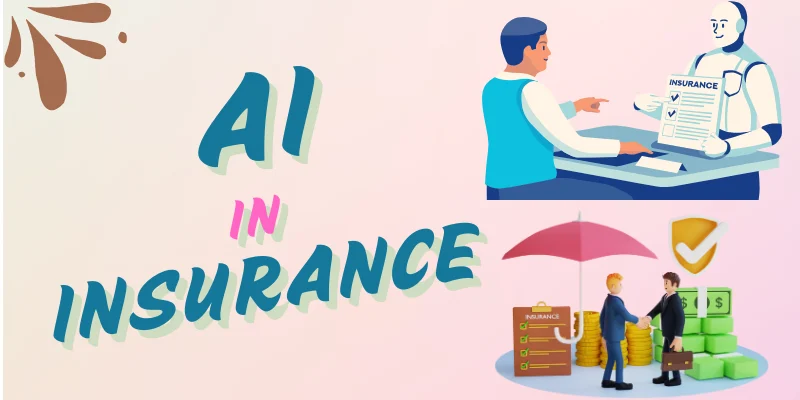
How AI Has Changed Insurance:
AI improves claims processing, fraud detection, and personalized insurance plans.
How AI is Used in Insurance:
- Fraud detection – AI detects suspicious claims by identifying unusual patterns.
- Automated claims processing – AI speeds up the process, reducing delays in approvals.
- Personalized insurance plans – AI analyzes data to offer custom insurance policies for clients.
- Chatbots for customer service – AI assists customers by answering questions and helping with claims.
Conclusion
The impact of artificial intelligence across these 15 key industries - demonstrates its transformative potential. By automating processes, enhancing decision-making, and personalizing experiences, AI is not only improving operational efficiency but also driving innovation and growth.
As AI continues to evolve, its applications are likely to expand further, offering even greater opportunities for businesses and consumers alike. The future is bright for industries that embrace this powerful technology, as they stand poised to redefine the standards of excellence and innovation in their respective fields.



Please Write Your Comments